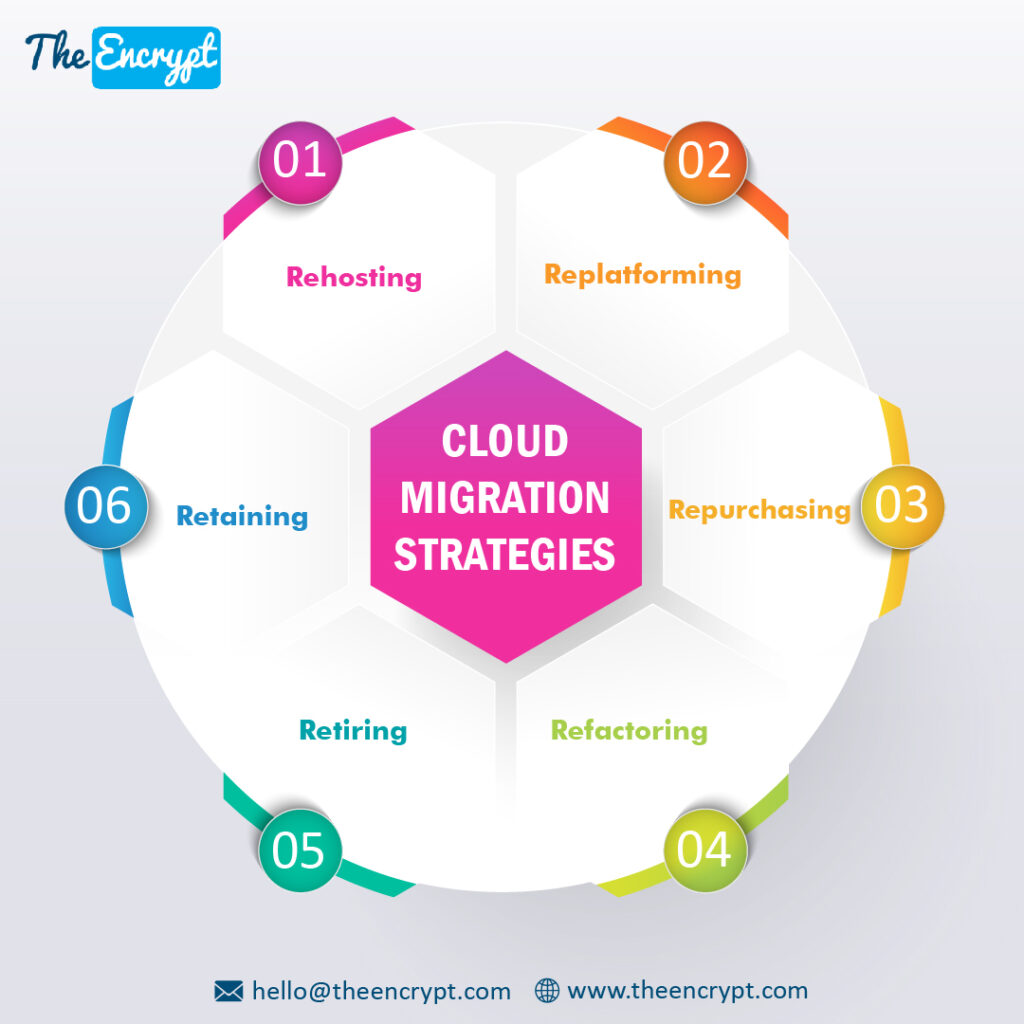
The online world is changing, and that too for the good. Let’s recall ten years ago. Maintaining files and then accessing them was a really big task. A lot of times, it was seen that the improper maintenance of files led to miscommunication and the loss of important documents. Thanks to technology! Today we have one of the best options we can think about – cloud migration! The cloud is one of the safest and easiest ways to store your business information. It doesn’t matter which genre of business you belong to. Cloud has been proven effective for all.
Before migrating to the cloud and making this transition, you may have questions about how it can be done safely. This is common! The cloud storage system is relatively new, and hence there are a lot of possibilities that people need clarification regarding the same. Here, we will discuss some of the most promising strategies to uphold for cloud migration.
Many companies have already shifted to cloud migration, so there is an innate demand in the market. Companies also tend to shift between different cloud providers, so analysing the market is an important step.
Understanding Cloud Migration:
Before we talk about the different strategies for cloud migration, it is imperative to understand what one means by cloud migration. It is a process by which a company will move all its tangible and intangible data to a cloud server and secure it with the latest technology. Cloud servers are extremely safe and, at the same time, accessible. They ensure that no matter which data you migrate, it is kept safe and secured. When you shift to this system, many benefits are associated with the same. Some of these include scalability, cost-effectiveness, efficient use of space and similar others.
As a company, you need to make sure that you depend on a safe cloud server that will help you in the long run. There are a lot of servers in the market, and this makes the process even more complicated. You can also deal with public data and keep it safe under cloud storage. You have to get a simple knowledge of selecting the best cloud server to keep yourself and the data protected. But the efficiency of this system is much more than any other data management base.
Effective Strategies For Easier Cloud Migration:
As a company, when you decide to shift to a completely new cloud server, you need to take care of a lot of data. Managing such a huge bulk of data can be difficult if you do not have effective ways to help you out. Some of the best strategies that you can implement for an effective data migration process are:

1. Rehost
The first and most common strategy for effective cloud migration is the “rehost” strategy. In more simple terms, people often refer to this as a “lift” and “shift” strategy. The method is simple and effective, which has made many people shift to this strategy. So what do we do in this domain? We try redeploying all the data and the application on the cloud server. As a business, we have a lot of prior data and apps that we use daily.
We take these and shift to the new cloud server that we have selected. Why is this so popular again? One of the major reasons why so many people have shifted to this strategy is because of its simplicity. Companies do not have to deploy many resources, and the efficiency is also at par. If you aim to modify the code and simultaneously shift all your applications as it was, then it does not get better than rehost! What more do you need than simple and easy-to-replicate?
Read more: 6 Recent Trends in Cloud and IoT Security
2. Refactor
The next strategy that we often implement when it comes to migrating data to a cloud server is none other than refactoring. Here the principle is quite simple and similar to the rehost strategy. The motto of refactoring is “lift, tinker and shift”. So how is it different from the first strategy? Here the only difference is that you modify the application a little bit so that it is a better fit for the cloud. The need for each cloud is different; hence tweaking it a bit will help you fit the cloud’s needs.
But does this mean you will change the central character and build the application? Precisely, no! The app’s architecture will remain the same, and you will need minute changes to help you fit the application better. Refactor is also a simple strategy, but you need extra support to carry it out smoothly. There are a lot of cloud-based tools, and refactoring the applications helps you to better use them. If you are considering using a refactoring strategy, it is better to know how to make it more effective.
3. Revise
You will be quite amused to see that although these strategies have much in common, some basic elements make them different. The major tenet of revision is that you need to build it on prior strategies. You will then have to change the code as well as the architecture of the app to squeeze it into the cloud server better. But when strategies like rehost and refactor, exist, why would anyone use revision as a more complicated strategy? The answer is simple. Revise ensures that the apps can make complete good use of the cloud server and put the same into better efficiency.
But if you think that anyone can aid you with this revised strategy, you would be mistaken. As mentioned, this is a complicated process, primarily because you need good coding knowledge to make the changes. Along with that, you need to have great planning skills as well, which will be able to aid you in the future. We can guarantee that if you do not have enough exposure and understanding, the revised strategy will not be able to render you much help.
4. Rebuild
How is it even possible that we talk about the strategies for cloud migration and not mention “rebuild” as a strategy? The simplest way to explain rebuild is that it takes the revised strategy a notch higher and increases efficiency. So what does rebuild offer? This particular strategy changes the base code completely and then changes it with a brand new code. It is an exceptionally tedious process because you must change the complete base code and devise a new one.
In this case, a common question is that even if the process is so difficult, why do individuals still shift to it? The answer is simple! There are a lot of instances when the existing code the company has does not render good results. In such cases, the option is to completely change it and shift to a newer base. There are instances when the existing scenario does not meet the fundamental requirements of the business, and this is when you need to formulate a complete change. However, you must also be aware of whom you choose to go ahead with because security reasons are involved.
5. Replace
And finally, the last strategy that we have to mention in this case is none other than “replace”. You will notice that each step we mention is a notch higher than the previous one. A similar situation prevails for “replace” as a strategy as well. Here you end up shifting to a new code which satisfies your company’s needs better. Then what is it that makes replace different from rebuild?
“Replace” requires you to shift to a code base which is a third-party pre-built structure. As a company, you will not invest the time and resources to build a new strategy from scratch. The third-party cloud server is usually provided by a vendor who will ensure you can shift to the same without any hassles.
The system is brand new, and hence it is much more efficient as well. You will not take anything else from your old system except the data. The process is like giving your data a new home- the third-party pre-built cloud server. This one is more expensive than the other strategies we have mentioned. A common reason is that it saves you from setting up everything from scratch.
Conclusion
We cannot deny that shifting to a cloud server is important, and you reap the most amazing benefits as an organization. It may be unsettling initially, but with time, you will see how smooth flowing and easy it becomes. The cloud migration strategies we have mentioned are simple, and they will ensure complete security as well.
